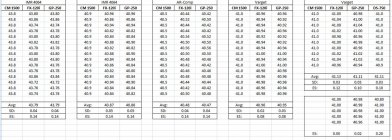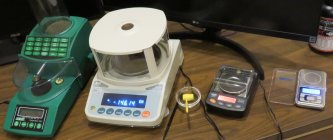Jager
Gold $$ Contributor
For a bunch of years now I have said that two things were game changers in my shooting world… the introduction of an accurate, reliable digital scale; and the accessibility of precise, easy-to-use chronographs.Both of those, together, fundamentally changed how I approached handloading.
I’d now add a third – QuickLoad software. But that’s a story for another day.
Like many here, I began loading ammo a long, long time ago. And for most of us, that meant uncounted hours in front of an analog beam scale. That 10-10 scale of mine saw yeoman service across literal decades, and never gave a lick of trouble in all that time. When I open the door to my powder closet and see it resting there on the shelf, I cannot help but smile.
But I haven’t actually used it in years. The day my Chargemaster 1500 showed up was revelatory. And after using it for only a couple of loading sessions I knew I would never be going back.
For all its benefits of speed and convenience, though, the Chargemaster didn’t bring any improvement in precision – it came claiming the same 0.1 grain accuracy that its numerous analog predecessors had long offered. It would be many more years before affordable technology would grant us the ability to look back and see what we had.
Nowadays, my scale of choice is an A&D FX-120i. That’s not the only good scale out there, of course. There are even better, pricier models available – the esteemed Sartorius comes to mind. But the FX-120i strikes a good balance between price and performance. And it’s popular among many serious handloaders (I say “serious” not as a slight to anyone who doesn’t choose it, but rather simply as a nod to its price point… I don’t know of anyone who would pay the coin for one if they weren’t pretty serious about their handloading).
More particularly, one of the benefits of a laboratory-grade electromagnetic force restoration scale like the A&D or the Sartorius is that it allows you to evaluate their older strain-gauge (or analog) brethren. The much deeper levels of precision a lab balance offers – 0.02 grain in the FX-120i or 0.01 grain in the Sartorius – allow us to, finally, judge the efficacy of those older scales.
With that in mind, I decided to throw a few charges with the Chargemaster, weigh them on the A&D, and see what I got. It’s an interesting experiment… the Chargemaster, after throwing its charge, sits there with a number painted on its LCD screen. That number seems solid, resolute, unequivocal. You very much have the feeling that that number is the number.
And then you lift the pan and carefully place it on the A&D…
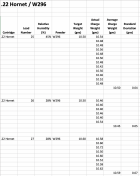
The Chargemaster actually acquits itself pretty well. Of 26 charges thrown, only one – the 10.72 gr charge in the third group – was outside its 0.1 grain spec, and that just barely. The average throws are very close to the target weight. And the standard deviation isn’t bad.
How about with a cartridge of higher capacity, using an extruded powder?
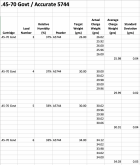
Again, the Chargemaster does a pretty good job. Out of 20 charges thrown, only one – the 34.12 gr in the last group – is slightly out of spec.
I think it’s mostly a good-news story. The Chargemaster seems to reliably live up to its promises. I still use mine occasionally. Especially with larger capacity cartridges where a charge variation of some hundredths of a grain isn’t going to make much difference; or with loads where less precision is required.
One last twist, though… those of us who use QuickLoad know that you can (and should) tweak the Burning Rate factor in that software to dial in the particular powder lot you’re using. What I’ll do as I run near the end of a current lot of powder is build a handful of rounds of a known load, using known primer and brass, using the old powder; then load an equivalent number of rounds using the new lot of powder. Setting off those two groups in front of a chronograph will then give me a quick first baseline of where the new powder sits vis-à-vis the old lot.
But if you’re using QuickLoad to evaluate chamber pressures, you need a fair bit of precision. So when I’m running that old/new powder exercise I’ll demand that all charges be within three ticks of the highest precision that the FX-120i is capable of – either dead-on, or 0.02 grain under, or 0.02 grain over.
With that in mind, I set up the Chargemaster to throw those requisite charges – five of the old, five of the new – and set to seeing how many throws it would take…
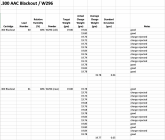
Looked at one way, this test is entirely unfair to the Chargemaster. RCBS has never claimed anything other than 0.1 grain precision for that scale. Holding it to an accuracy level of 0.04 grains seems a very high bar, indeed. And yet the Chargemaster hit that level on ten out of 27 throws.
I’d call that good.
Last edited:











